Rampant inflation may ignite bread riots in Iran, economist warns

A fresh hike in bread prices has deepened the strain on many Iranians, prompting warnings from a prominent economist that unchecked inflation could spark unrest.
Iran International

A fresh hike in bread prices has deepened the strain on many Iranians, prompting warnings from a prominent economist that unchecked inflation could spark unrest.

Firsthand accounts reveal how severe water and electricity shortages are disrupting daily life across Iran, with blackouts causing life-threatening accidents and hardship for vulnerable families.
In one video, a woman with a broken leg, filmed in a hospital, pleads with officials to step aside if they cannot provide basic services.
“Why in the 21st century should we have power outages?” she asks. “If you can’t run the country properly, you better get lost.”
She explains that her diabetes requires overnight monitoring before surgery.
Another clip shows a woman describing repeated falls in the dark. Pointing to a cane on the floor, she says: “Now I have to move around with this. I swear to God I don’t even have a single rial to go to the doctor and get an X-ray.”
Other footage shows a man trapped in an elevator after a sudden outage, urging that buildings be equipped with emergency systems to prevent such dangers.
Daily disruptions
From Sari to Mashhad, residents describe routine blackouts at night and during business hours.
A young man in Sari says the power cuts every evening from 9 to 11 p.m., while a merchant in Mashhad films a bazaar left in darkness.
“Look at the bazaar,” he says. “How can these people make a living and pay their rent?”
In Tehran, a customer records shoppers enduring stifling heat in a hypermarket after air conditioning and lighting failed.
“This place used to be cool and comfortable, but now everything is off,” he says. “People are forced to shop in this unbearable heat.”
Official response
Energy Minister Abbas Ali Abadi has promised improvements.
“Soon the water situation will improve, the gas situation will improve, and weather conditions will also cooperate,” he said this week, before adding the telling qualification: “God willing.”
But Iran’s reliance on decades-old thermal power plants—still providing over 80% of electricity—alongside shrinking hydroelectric capacity due to prolonged droughts has left the grid deeply vulnerable.
Spring hydro output has collapsed from about 6,500–7,000 megawatts to only 2,500.
Public embarrassment
The crisis has also spilled onto national television.
One widely shared clip shows a state broadcast plunging into darkness shortly after a lawmaker claimed an alleged Israeli pilot’s “confession” would soon air.
Israel’s Foreign Ministry mocked the scene on X, posting in Persian: “Just make sure the power doesn’t go out in the middle of broadcasting the confession.”
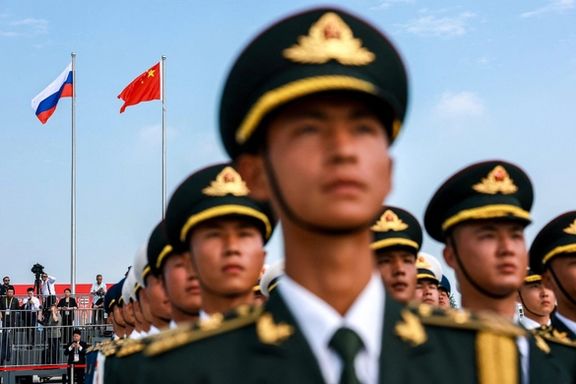
Tehran’s sharpening nuclear clash with the West and embrace of Beijing and Moscow have brought it to a crossroads, where choices this month may decide the future of Iran’s rulers and the ruled.
The formal start of the UN “snapback” process to restore sanctions, the latest critical report by the International Atomic Energy Agency (IAEA), and President Masoud Pezeshkian’s high-visibility diplomacy at the Shanghai Cooperation Organization (SCO) summit together mark a decisive moment for Tehran.
The most immediate challenge is the likely restoration of UN snapback sanctions before 28 September.
European governments argue the trigger is Iran’s sustained non-compliance with key limits in the 2015 Joint Comprehensive Plan of Action (JCPOA) over the past six years. Tehran rejects that position, insisting the E3 forfeited standing by failing to deliver promised economic normalization after Washington’s 2018 withdrawal.
Whatever the legal briefs, reinstated measures would effectively return Iran to a Chapter VII-related sanctions framework, with all the familiar consequences: renewed constraints on arms transfers, reinforced financial isolation, and fresh layers of economic restrictions that have already strained household incomes and the broader investment climate.
Scrutiny intensifies
New IAEA findings have sharpened scrutiny of Iran’s program.
The agency signaled fresh shortfalls in cooperation, pointing to unexplained inventories of enriched uranium at levels exceeding JCPOA caps.
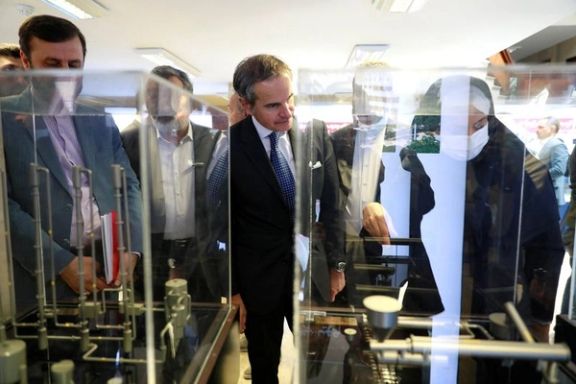
A confidential tally circulated to member states indicated Iran holds about 441 kilograms of uranium enriched to 20% or higher – enough, by the agency’s rule of thumb, to yield material for around ten nuclear devices if further refined.
Director General Rafael Grossi has said there is no sign of diversion, but emphasized the need for verification and timely documentation – something Iranian officials have yet to provide.
Rather than escalate immediately, the Secretariat has kept contacts open in hopes of restoring routine access. Two reports to the IAEA’s 35-nation Board of Governors underline the urgency: inspections must resume “without delay,” and the buildup of highly enriched stocks remains a “serious concern.”
Eastward turn accelerates
It is against this tightening sanctions and verification backdrop that President Pezeshkian’s China tour looms large.
Over a week of meetings – most prominently with Xi Jinping in Beijing and Vladimir Putin in Tianjin – Tehran sought to translate a long-advertised “Look East” doctrine into concrete political and economic ballast.
Iranian officials pressed for more than sympathetic rhetoric: Moscow and Beijing are backing Iran’s claim that snapback is legally void but, crucially, Tehran hopes they avoid implementing any reimposed UN measures.
For China and Russia, the ask is non-trivial. Skirting U.S. and European unilateral sanctions is one thing; openly discounting UN obligations is another, with implications for their global positioning.

Still, Pezeshkian delivered a message calibrated for both audiences at once.
He reaffirmed Iran as a “reliable friend” to China, echoing Supreme Leader Ali Khamenei’s priority on eastern partnerships. He also stressed Tehran’s readiness to operationalize the 25-year agreement with Beijing across energy, infrastructure, and technology.
The session with Putin amplified the signal: in Tehran’s view, China and Russia are no longer transactional partners of convenience, but strategic anchors to confront Western pressures.
Roadblocks remain
The SCO summit in Tianjin provided the showcase for this reorientation. Now a full member, Iran leaned into the organization’s language of sovereignty, non-interference, and resistance to unilateralism.
Yet the question of deliverables hangs over the pageantry.
Iran’s earlier eastward experiments, notably under Mahmoud Ahmadinejad, yielded less than the rhetoric promised. Banking bottlenecks, compliance risks for major companies, and the gravitational pull of Western markets on Chinese firms limited follow-through.
Whether today’s geopolitical alignment—and the higher stakes of great-power competition—change those cost-benefit calculations is the live test.
For Tehran, success will be measured not in communiqués but in sustained energy sales, credible financing channels, technology transfers, and visible progress on infrastructure that can withstand sanctions headwinds.
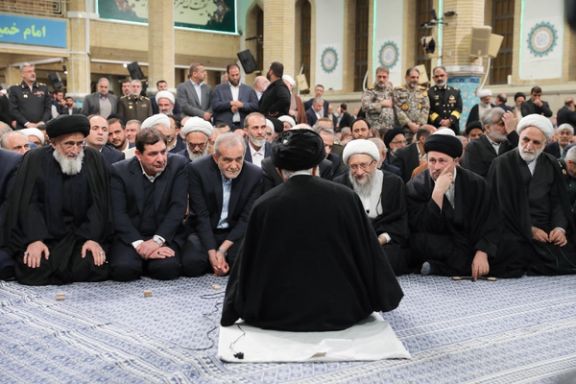
Future hangs in balance
Inside Iran, the “Look East” pivot has sparked an energetic debate.
Hardline outlets herald the emergence of an “Eastern front” that validates decades of resistance to Western dominance. But reformist and moderate voices warn that the country risks swapping one form of dependence for another.
Their critique is less civilizational and more structural: if Iran becomes overly reliant on Moscow and Beijing for markets, capital, and diplomatic cover, it could re-create the asymmetries of influence that the 1979 Revolution sought to overturn.
In this reading, the pivot is a pragmatic hedge, but also a bargain that may constrain policy autonomy over time.
The central uncertainty is whether the “Look East” approach can move beyond symbolism and episodic deals to furnish the durable economic and technological lifelines Iran needs.
If it can, Tehran may blunt the effect of renewed UN measures and stabilize growth on an alternative platform. If it cannot, the pivot risks devolving into a slogan that masks deepening isolation and narrowing options.
As September advances toward the snapback deadline, Tehran stands at a genuine crossroads.
Choices made now – on access for inspectors, on the pace and level of enrichment, on the specificity of commitments with China and Russia – will shape not only Iran’s nuclear trajectory and economic survival, but also the character of its grand strategy for the remainder of Khamenei’s tenure.
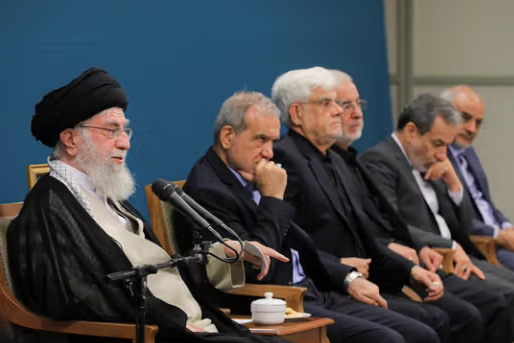
Tehran’s approach to diplomacy may be best summed up by a Persian phrase: refusing with one hand and accepting with the other. But does the moribund economy show that the equivocating strategy has finally run out of road?
Britain, France and Germany last week triggered the so-called snapback mechanism which is due to reinstate UN sanctions by month's end, sending Iran’s fragile economy into a tailspin.
Iran’s currency, the rial, now trades at more than one million to the dollar, having lost nearly a third of its value since Donald Trump won the US presidential election last November.
Even the country’s private sector has sounded the alarm, but fast regretted it.
The Iran Chamber of Commerce—an institution run by business elites under heavy state oversight—published a report warning that UN snapback sanctions could spark a “deep crisis,” with inflation hitting 90 percent and GDP shrinking by three percent.
The report was swiftly deleted. Tasnim News, tied to the Revolutionary Guards (IRGC), blasted it as “dangerous and inflammatory,” saying it could fuel panic and speculative inflation.
Within hours, IRGC intelligence officers raided the Chamber, interrogated staff, and pressured the board into silence. It was yet another display of the regime’s instinct: shoot the messenger.
Official bravado
Government officials have chosen defiance over honesty.
Deputy Foreign Minister for Economic Diplomacy Hamid Qanbari declared that Iran’s “economy is so big and self-sufficient that it will not break under sanctions.”
Oil Minister Mohsen Paknejad admitted snapback could tighten restrictions on oil exports but boasted that “our hands are not tied.”
The message is meant for domestic consumption, but Iranians have heard it before: decades of promises that sanctions are survivable, even beneficial. Few believe it now.
Rial’s dead cat bounce
The rial’s collapse has not been a straight line.
On March 24 it hit a historic low of nearly 1.1 million to the dollar. But in April, as Tehran and Washington engaged in Oman-mediated nuclear talks, the currency clawed back 31 percent.
Officials convinced themselves they could entice the Trump administration into a deal that would preserve Iran’s nuclear leverage, maintain funding for regional proxies, and leave intact its growing missile and drone programs.
But surprise Israeli strikes on June 12 torpedoed the talks, upended markets and erased the rial’s temporary gains, initiating the next slide.
An economy in ruins
Iran’s economic woes go beyond currency freefall. Inflation and joblessness are grinding daily life, while water shortages, blackouts and environmental crises repeatedly halt basic activity.
Public anger simmers but has not so far erupted.
Meanwhile, Tehran’s military capacity has been gutted. Missile stockpiles are depleted, air defenses degraded, and armed allies from Gaza to Lebanon weakened by repeated blows. Once a symbol of strength, Iran’s arsenal is now a reminder of vulnerability.
And yet, the clerical establishment shows no sign of recalibrating.
Faced with looming UN sanctions, domestic crisis and international isolation, it clings to the illusion that a mix of propaganda, repression and tactical stalling can buy survival.
Talk therapy as diplomacy
For years, Tehran has treated negotiations less as a path to resolution than as a pressure valve—a way to appear engaged, delay enforcement and test the patience of counterparts.
That strategy may have worked when the global community was divided or distracted. It no longer does.
The snapback mechanism is proof: Europe has abandoned its posture of indulgence, siding with Washington in reimposing penalties.
Iran’s rulers now face the consequences of years spent refusing with one hand and pretending to accept with the other.
For ordinary Iranians, the result is an ever-shrinking future: savings vaporized, wages worthless and hope steadily eroded.
Tehran remains content to offer the world more of the same—talk therapy instead of genuine negotiation, illusion instead of strategy—while hoping for divine intervention.
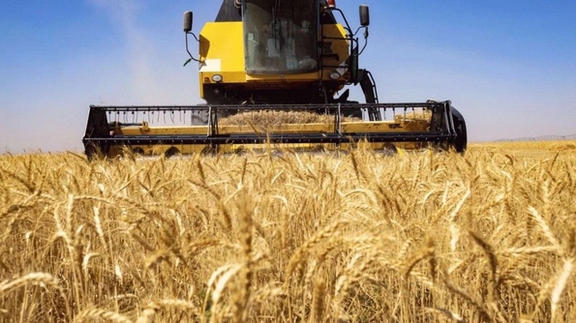
Government wheat procurement in Iran dipped by over a third this year due to declining production, officials said on Thursday, as drought and financial woes continue to plague the economy.
In Iran, the term “guaranteed purchase of wheat” refers to a government program whereby the Government Trading Corporation (GTC) commits to buying wheat from domestic farmers at a pre-established, fixed price.
The government says the policy shields farmers from volatile market prices and ensures a stable income by offering a predictable price while also enabling the government to manage reserves of the staple crop and guarantee supply.
However, state-guaranteed purchases had dropped to 700,000 tons, Attaollah Hashemi, head of the National Wheat Farmers Foundation, told ISNA news agency on Thursday.
'Risks ahead'
“This year’s guaranteed purchases have decreased by 35 percent compared to last year, a decline that is a direct result of reduced production caused by drought and insufficient rainfall,” he said.
The government still owes some farmers payments for wheat deliveries but promised settlement soon, Hashemi added. He warned that “reliance on wheat imports could bring serious risks for the country.”
According to US Department of Agriculture data, the country's wheat production for the 2024/25 season is projected at around 16 million metric tons.
Despite these figures, Iran’s import needs can vary: the FAO projects wheat import requirements for the 2024/25 marketing year (April–March) at 1.3 million tons.
However, due to drought-induced production shortfalls, imports are expected to rise in the current calendar year to about 4.5 million tons, according to state media.
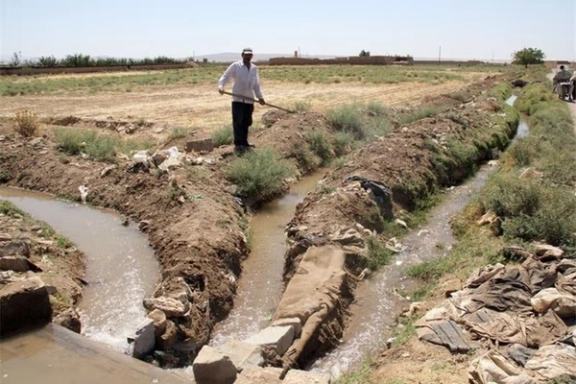
Water crisis
Agriculture Minister Gholamreza Nouri Ghezaljeh recently described the situation as unprecedented. “From the perspective of food security, we are in the most difficult circumstances,” he said, citing poor economic conditions and what he called the worst droughts in memory.
Production had fallen by 35 to 40 percent due to energy shortages and irrigation problems, Ghadamali Bourbour, deputy head of the Wheat Farmers Foundation, said in late August.
“This decline is rare in Iran’s agricultural history,” he said, adding that the trend would also push up dairy and meat prices.
Despite repeated water cuts across cities, official data show that 80 to 90 percent of Iran’s consumption still goes to agriculture, much of it under traditional methods.
With procurement falling and drought intensifying, the government faces rising pressure to reform or risk deeper food insecurity.
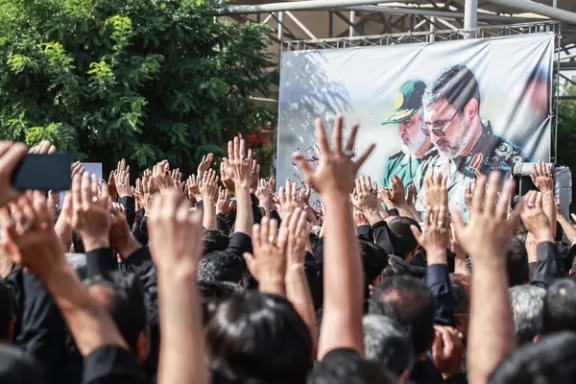
The postwar debate over Israeli infiltration of Iran’s security and political system has added another layer to contentions in Tehran, with warnings and accusations directed at some hard-liners and radical insiders.
Concerns have intensified as politicians on both sides beat the drums of a possible new war following the activation of the trigger mechanism by European powers which could reimpose international sanctions by month's end.
"Infiltration of Iran’s security organizations cannot be ignored,” former lawmaker Mohammad Ali Pourmokhtar told Khabar Online on Wednesday. “It has now become clear that infiltrating agents were involved in some of the attacks on military establishments."
He stressed that infiltrators often operate from within: "They gain trust by posing as insiders, allowing them to advance their agendas … (they) often disguise themselves as true believers in the system, and sometimes as radicals."
Revolutionary Guards commander and former MP Mansour Haghighatpour echoed the sentiment. "The people should be vigilant and suspicious of those who race ahead of the revolution and chant radical slogans," he said on Wednesday.
His remark, a rare swipe at hardliners who cloak themselves in revolutionary zeal, underscored how the infiltration debate is feeding into wider factional infighting.
No official explanation
Despite such warnings, no major counter-intelligence breakthroughs have been reported beyond the swift execution of a nuclear scientist accused of betraying slain colleagues to Israel.
Instead, blame has shifted to Afghan refugees, social media vulnerabilities and figures within the intelligence community, adding more confusion than clarity.
Family members of some slain commanders said the victims did not use smartphones or social media—though it later emerged that some of their bodyguards did.
What has most stunned officials is the depth of Israel’s penetration.
Drones used in the assassinations were reportedly built or assembled inside Iran by Israeli agents, who vanished without a trace after their mission.
One reason Supreme Leader Khamenei has avoided public appearances and even meetings with insiders is his likely deep mistrust of suspected infiltrators in the security apparatus.
Pourmokhtar warned that infiltration can reach the very top: "Sometimes infiltrators operate in the deeper layers of government, figures unknown to the public, yet capable of influencing top-level decisions."
‘In whose interest?’
Last week, security chief Ali Larijani acknowledged the problem as a “serious matter,” adding that Iran “had painful weaknesses" in the war with Israel.
The debate has also spilled into parliament, where critics have accused hardliners of damaging national security by advancing extreme policies, citing a recent urgent move to pull Iran from the nuclear Non-Proliferation Treaty.
Lawmaker Ahmad Bakhshayesh Ardestani admitted: "The triple-urgency bill to exit the NPT was a gift to Trump." Abbas Goudarzi, spokesperson for the presidium, added: "Withdrawing from the NPT is a matter of governance, and the Majles cannot decide on it independently."
Reformist outlet Fararu went further, accusing parliament’s National Security and Foreign Relations Committee of driving confrontational policies.
It pointed to the committee’s push to raise enrichment levels, promote aggressive rhetoric, and even table a motion to withdraw from the Non-Proliferation Treaty—moves it said are justified as bargaining tools but fail to deter war.
"Does the committee act to ensure national security," it asked, "or does it work against it?"
Bread remains the cornerstone of an affordable meal, but even that is slipping beyond reach as prices surge.
“If inflation remains unchecked … Iran could witness a bread riot,” economist Hossein Raghfar told the moderate outlet Rouydad24 this week, warning that inaction could have consequences far beyond the economy.
“The lack of planning, combined with external pressures, could leave the country vulnerable to regime change efforts by foreign powers and threaten Iran’s political and social stability,” he added.
Several Iranian outlets linked the latest hikes to the psychological impact of the reactivation of the “trigger mechanism” and the snapback of pre-2015 sanctions.
Raghfar said poor crisis management has already driven up the cost of foreign trade and imports, predicting further increases and unrest as pressures mount.
Bleak outlook
Iran’s Chamber of Commerce last week projected a worst-case scenario of a 60% currency plunge, inflation at 75%, and unemployment at 14% in the coming months if sanctions are reinstated.
The Chamber later retracted its forecasts, reportedly after a visit by security agencies to its Tehran offices.
Raghfar echoed the concern without citing the forecast. “The snapback of sanctions will severely impact Iran’s international trade and shipping,” he said. “At the same time, Iran will face increased restrictions on international banking.”
Tehran is failing to address mounting challenges, Raghfar argued, accusing the government of devising policies that often appear to align with the aims of those seeking to topple the Islamic Republic.
President under fire
Some critics have been more specific.
Moderate politician and former Tehran mayor Gholamhossein Karbaschi told Khabar Online that President Masoud Pezeshkian was wasteful and misplaced his priorities.
“When he visits shrines or the graves of martyrs, he is accompanied by a massive entourage … of 1–2,000, whose presence is unnecessary and has no meaningful impact on the president’s security,” Karbaschi said.
“The funds allocated to certain religious propaganda organizations exceed the annual budgets of entire ministries,” he added.
Karbaschi omitted that most such organizations are linked to the office of the supreme leader and lie beyond any administration’s remit. Pezeshkian himself underlined this limited authority on Wednesday.
“Why should the country’s resources be handed over without reason to institutions and bodies that have no benefit or usefulness?” he asked at a conference.